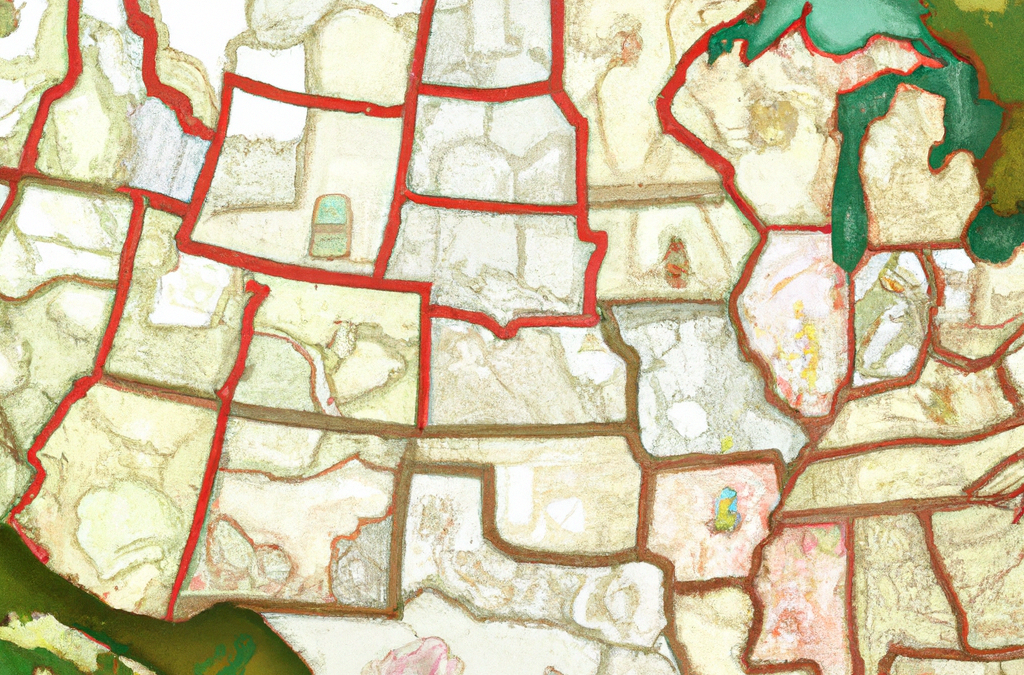Unveiling America’s Redlining Legacy: A Dark Chapter of Discrimination ===
Redlining in America: A History of Discrimination
In the early 20th century, a practice known as redlining took hold in cities across the United States. This insidious form of discrimination involved the systematic denial of housing loans and insurance based on race or ethnicity. Redlining, which was predominantly targeted at minority communities, has had a lasting impact on the social, economic, and demographic makeup of American cities.
Unveiling the Legacy: How Redlining Shaped Communities
Redlining was a practice that was explicitly institutionalized by the federal government through the Home Owners’ Loan Corporation (HOLC) in the 1930s. Neighborhoods were graded on color-coded maps, with areas occupied by minority groups often designated as “hazardous” or “undesirable” for investment. This led to a vicious cycle of disinvestment in these areas, making it nearly impossible for residents to access loans and investment opportunities. As a result, minority neighborhoods were left without vital resources such as quality schools, healthcare facilities, and business development, perpetuating a cycle of poverty and limited upward mobility.
The Impact of Redlining on Minority Neighborhoods
The effects of redlining on minority neighborhoods were devastating and far-reaching. Denied access to fair housing loans, minority communities were subjected to overcrowding, dilapidated housing conditions, and predatory lending practices. These conditions not only stifled economic growth but also contributed to a decline in overall health and well-being within these communities. Limited access to quality education and healthcare, combined with higher crime rates, further exacerbated the cycle of poverty and inequality experienced by residents of redlined neighborhoods.
Exposing the Inequality: Redlining’s Lasting Effects
The legacy of redlining is still visible in many American cities today. Decades of redlining have resulted in stark racial and economic segregation, perpetuating disparities in wealth, education, and health outcomes. Neighborhoods that were systematically denied investment and resources through redlining continue to suffer from a lack of economic opportunities and social mobility. This perpetuates a cycle of generational poverty that disproportionately affects minority communities, further entrenching racial inequality.
Redlining: A Catalyst for Racial Disparities in Housing
Redlining was not an isolated practice but rather a catalyst for broader racial disparities in the housing market. It created a stark divide in homeownership rates between minority and white households, with minorities facing significant barriers in accessing loans and homeownership opportunities. This has had enduring effects on wealth accumulation, as homeownership is often a primary driver of intergenerational wealth transfer. The racial disparities created through redlining continue to persist today, with minority communities facing significant challenges in attaining homeownership and building wealth.
Overcoming the Legacy: Steps Towards Equality
Addressing the legacy of redlining requires a comprehensive approach. Firstly, policies must be put in place to ensure fair and equitable access to housing loans and investments for all communities. Developing affordable housing initiatives in historically redlined neighborhoods can also help alleviate the effects of disinvestment and encourage economic growth. Additionally, investing in education and healthcare in these communities can help break the cycle of poverty and provide residents with the tools they need to succeed. Finally, fostering inclusive and diverse neighborhoods through community engagement and anti-discrimination initiatives is crucial for dismantling the lasting effects of redlining and promoting equality for all.
===
Unveiling America’s redlining legacy shines a light on the deep-seated discrimination that has shaped the fabric of our communities. It is imperative that we acknowledge and confront the lasting effects of redlining to truly work towards a more equitable future. By understanding the history and impact of redlining, we can take proactive steps to overcome its legacy and create a society where every individual has access to equal opportunities and rights. It is only through these concerted efforts that we can truly address the systemic inequalities perpetuated by redlining and build a more inclusive nation.

